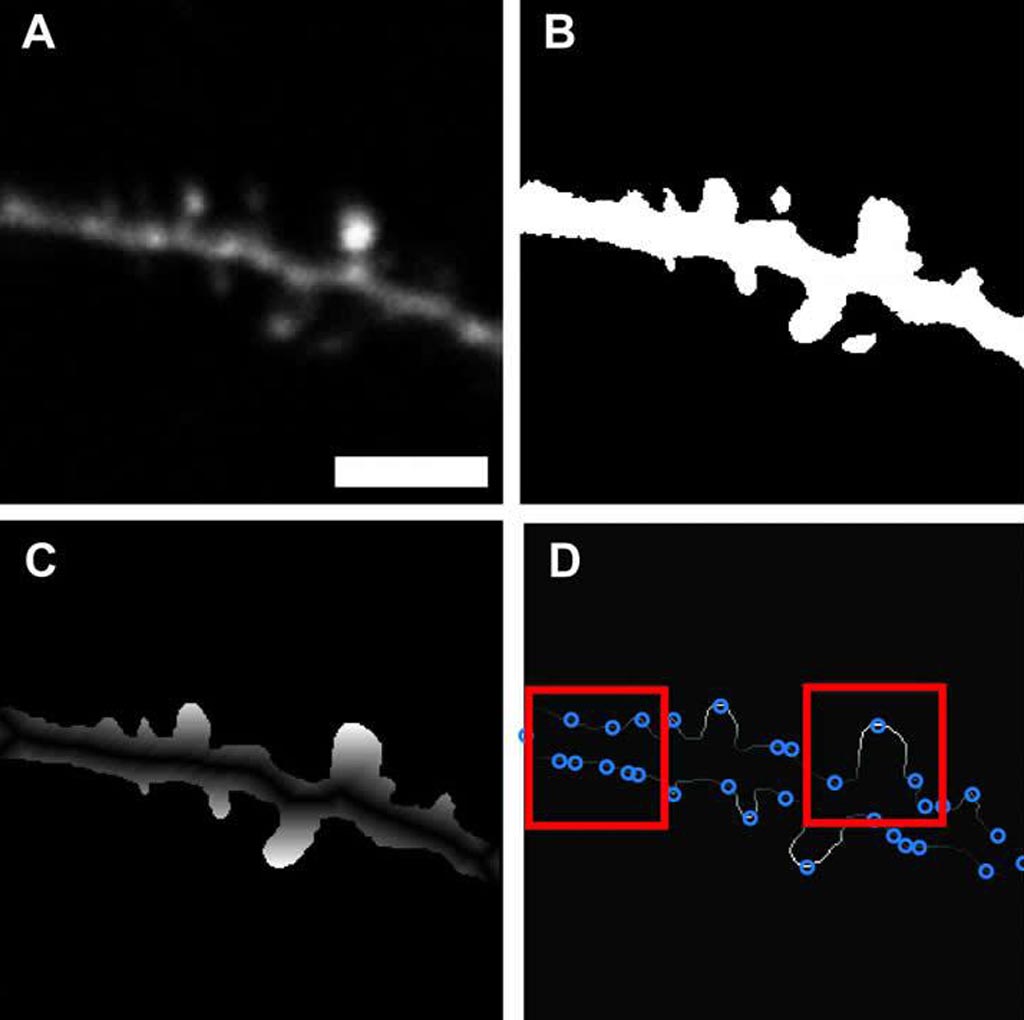Imaging Software Rapidly Identifies Dendritic Spines
By MedImaging International staff writers
Posted on 17 Jul 2018
A novel 2-photon microscopy algorithm autonomously and efficiently identifies small dendritic spines with over 90% accuracy, according to a new study.Posted on 17 Jul 2018
Developed by researchers at the Max Planck Florida Institute for Neuroscience (Jupiter, FL; USA), the software is built on a machine learning approach that uses custom thresholding and binarization functions to clean up fluorescent images, and a neural network trained to differentiate between the dendrite backbone and dendritic spines using the relative shape of the spine perimeter and its corresponding dendritic backbone. Once the training period finishes, the software can automatically scan through an image and demarcate spines it comes across with high precision.

Image: Surface smoothing of a binary image of the dendritic spine (Photo courtesy of Max Planck Florida Institute).
By automating the process of spine identification, the high-throughput imaging system has the potential to dramatically increase workflow efficiency by stimulating and monitoring hundreds of dendritic spines under various conditions at the same time, shaving hours off analysis time. In addition, the source code is provided free of charge bundled together with a user-friendly, open-source, MATLAB-based software package for spine analysis. The study was published on July 5, 2018, in PLOS One.
“When engineers and scientists design cutting-edge microscopes, they usually focus on the actual physical components and design. They are mostly interested in what these imaging technologies can do, what boundaries they can break and how they perform,” said lead author Michael Smirnov, PhD. “Far less attention is placed on how these complex technologies can be made accessible for the average user and really improve their workflow. Each time I write my software, I always think about the user first; how can I make a difference for the person using it, make their research a little easier.”
Synaptic plasticity, the cellular basis for learning and memory, is mediated by a complex biochemical network of signaling proteins. These proteins are compartmentalized in dendritic spines, the tiny, bulbous, post-synaptic structures found on neuronal dendrites.
Related Links:
Max Planck Florida Institute for Neuroscience














